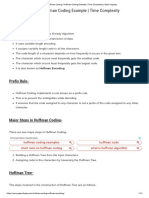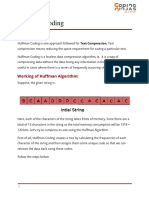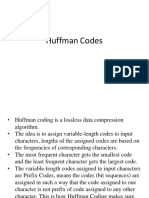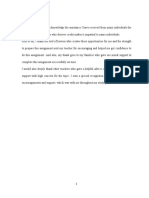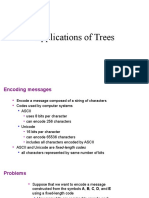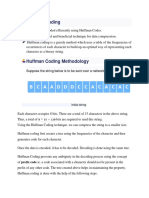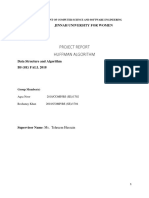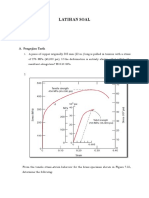0% found this document useful (0 votes)
37 views17 pagesHuffman Coding
Huffman Coding is a lossless data compression technique that uses variable length encoding based on character frequency, with more frequent characters receiving shorter codes. The process involves building a Huffman Tree and assigning codes to characters while adhering to a prefix rule to avoid ambiguity in decoding. The overall time complexity of Huffman Coding is O(n log n), making it efficient for data compression applications.
Uploaded by
KILLER GAMINGCopyright
© © All Rights Reserved
We take content rights seriously. If you suspect this is your content, claim it here.
Available Formats
Download as DOCX, PDF, TXT or read online on Scribd
0% found this document useful (0 votes)
37 views17 pagesHuffman Coding
Huffman Coding is a lossless data compression technique that uses variable length encoding based on character frequency, with more frequent characters receiving shorter codes. The process involves building a Huffman Tree and assigning codes to characters while adhering to a prefix rule to avoid ambiguity in decoding. The overall time complexity of Huffman Coding is O(n log n), making it efficient for data compression applications.
Uploaded by
KILLER GAMINGCopyright
© © All Rights Reserved
We take content rights seriously. If you suspect this is your content, claim it here.
Available Formats
Download as DOCX, PDF, TXT or read online on Scribd
/ 17












